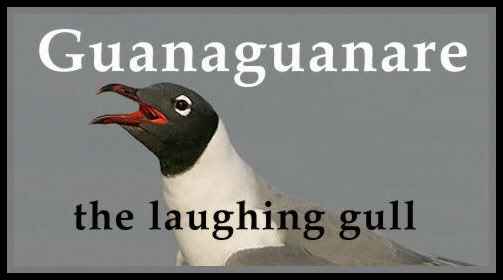CASCADURA from Maximilian Forte on Vimeo.
CASCADURA
By Roi Guanapo Ankhkara Kwabena [23/7/1956 - 9/1/2008]
so though i didn’t relish the mountain-dew
when laced with scorpions and centipede
nor tasted the caiman
singh did cook for me
i did enjoy the cascadura
and yes I wish in Trinidad to end my days
if i may
Refrain:
curry cascadu,
ah really love mih cascadura,
stew cascadu
ah really love mih cascadu
best village competition
tapia yard in st augustine
hosay nor ramleela
won't be banned, if i have my way
Refrain:
curry cascadu,
ah really love mih cascadura,
stew cascadu
ah really love mih cascadu
staring at island homes
nelson, carrera
an chacachacare
in dismay..
pepper sauce on the highway
soft coconut water round the queen's park savannah
hot doubles in san juan
traffic in the croissee
Refrain:
curry cascadu,
ah really love mih cascadura,
stew cascadu
ah really love mih cascadu
mincing fresh chive from sant d’eau
black mud in moruga, parang in
santa cruz or lopinot
divali in palo seco,
a lime in the north stand
for panorama, breadfruit oil-down
with saltfish in diego..
a curry cookup at caura or camelita
Refrain:
curry cascadu,
ah really love mih cascadura,
stew cascadu
ah really love mih cascadu
steel drums hammered in point a pierre
downtown carnival parade
bottle ‘n spoon in snake valley, laventille
elderly indian women in
carapichaima secretly teaching
a bride how to wine
Refrain:
curry cascadu,
ah really love mih cascadura,
stew cascadu
ah really love mih cascadu
politicians exposed in the mirror
muslim brothers guarding their border
liming on harris promenade
a dip in blue-basin or
la brea sulphur springs
me pelting mangoes in the mang…
shark 'n bake down chagville
a rude male breeze in
the middle of town, blowing up
sandra’s pretty dress
Refrain:
curry cascadu,
ah really love mih cascadura,
stew cascadu
ah really love mih cascadu
no one supports
stealing leather-back turtle eggs!
© Copyright – Roi Kwabena
Reprinted with kind permission of the author.
Source: The lyrics posted on this blog are often transcribed directly from performances. Although it is my intention to faithfully transcribe I do not get all the words and I have a knack for hearing the wrong thing. Please feel free to correct me or to fill in the words that I miss by dropping me a message via e-mail. I'd be forever grateful. Thanks in advance!
..............................................................................................................................

A Note From The Gull
Thank you, Roi. This post was originally presented on this blog on 4/11/06 but I am updating it to commemorate the third anniversary of our brother's departure from this world on the 9th January 2008. You are missed Roi. So much has happened in the world since you left and I would have liked to discuss some of these events with you.
Thank you, Max Forte for always remembering Roi, his life and his work and for loving the untainted soul of Trinidad and Tobago.
"Patria est communis omnium parens" - Our native land is the common parent of us all. Keep it beautiful, make it even more so.
Blessed is all of creation
Blessed be my beautiful people
Blessed be the day of our awakening
Blessed is my country
Blessed are her patient hills.
Mweh ka allay!
Guanaguanare













